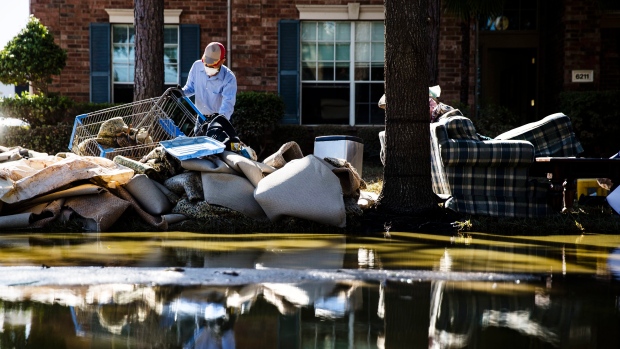Sep 11, 2017
'Everyone is vulnerable': Harvey, Irma a reminder flooding a risk in Canada too
, BNN Bloomberg

The devastating effects of the recent hurricanes in the United States and Caribbean serve as a reminder that Canada is at risk for extreme storms too, and experts are warning those living north of the border should be prepared.
While Canada doesn't often experience hurricanes, insurance professionals and climate experts say more extreme weather events – particularly heavy rainfall – will start to become more frequent and severe.
“One of the big risks facing communities and homeowners is flooding as a result of intense rainfall events,” Steve Kee, a spokesperson for the Insurance Bureau of Canada, told BNN in an email. “It does not matter whether your home is located in a floodplain or not. If water comes down so fast that the ground cannot absorb it, and sewer and wastewater infrastructure is overwhelmed, flooding can occur.”
Flooding in urban areas has resulted in more than $20 billion in damage between 2003 and 2012, according to the Government of Canada. Of the 8.6 million households in the country, 1.7 million have some risk of flooding, the IBC says.
But Blair Feltmate, head of the Intact Centre on Climate Adaptation, says everyone is at risk because the location of microburst storms – where anywhere between 150 and 250 millimetres of rain can fall – is unpredictable. Feltmate, who was appointed to the expert panel tasked with advising the government and homeowners on how to deal with flood damage, estimates only about 15 per cent of Canadian households have flood insurance.
"[Flooding] is the elephant in the room for Canada – that's the area that's costing Canada the most relative to extreme weather events," he told BNN in a phone interview.
"When you encounter and meet people who say, 'listen, I've lived in this area for 30 years and I've never seen flooding' and therefore, quite reasonably, they say 'I don't expect to see it going forward,' what they're not realizing is the dynamics and weather system they experienced when they were a kid aren't happening today," he added.
There are two types of coverage currently available in Canada: sewer backup coverage and overland insurance. The latter, which protects homeowners against damage from water that seeps through windows, doors and cracks from nearby bodies of water, has only been on the market since 2015. Feltmate says major insurance companies “stepped up to the plate” and introduced the product after the major flooding in Calgary and Toronto in 2013 caused insurers to realize there was a growing need for a new type of protection.
For larger, officially-declared disasters like a hurricane, or the Fort McMurray wildfire last year, each province has a disaster recovery program and sets its own its own coverage for financial aid. But if homeowners opt out of the insurance available, they will have a harder time qualifying for government assistance, Feltmate explains.
The IBC says every property is assessed on its level of risk – higher risk properties will pay more. But the insurance coverage might not cover the entire cost of the damage. This can be problematic for the 47 per cent Canadians living paycheque to paycheque, as water damage needs to be resolved relatively quickly, Feltmate says.
“If people don't have coverage, and don’t have money sitting around to fix it immediately, the house could be devalued,” he said.
Feltmate stresses a good way to deal with flood damage is taking preventative measures.
“The best solution to the problem is to not have the problem,” he said, noting homeowners can do a number of things around their homes like keeping valuables out of the basement or installing special flood-resistant windows.
Feltmate says Canadian cities also play a role in mitigation efforts, and need to build homes in anticipation of severe weather in the future.
"We've got to build in anticipation of the big storms that are coming," he said. "Everybody is vulnerable."
5 ways homeowners can protect their properties from flood damage:
- Put weather protection sealant around basement windows and the base of ground-level doors.
- Check sidewalks, patios, decks and driveways to make sure they haven’t settled over time and are causing water to drain toward your property. Clear snow away from the building’s foundation. If the ground is sloped one inch per foot near the building, moving snow just three to five feet from the building will reduce problems.
- Use a rain barrel to catch water runoff.
- Install flood shields or barriers for basement windows and doors.
- If a flood warning is in effect, shut off electricity to areas that are at risk of flooding.
(Find more tips through the Government of Canada website)




